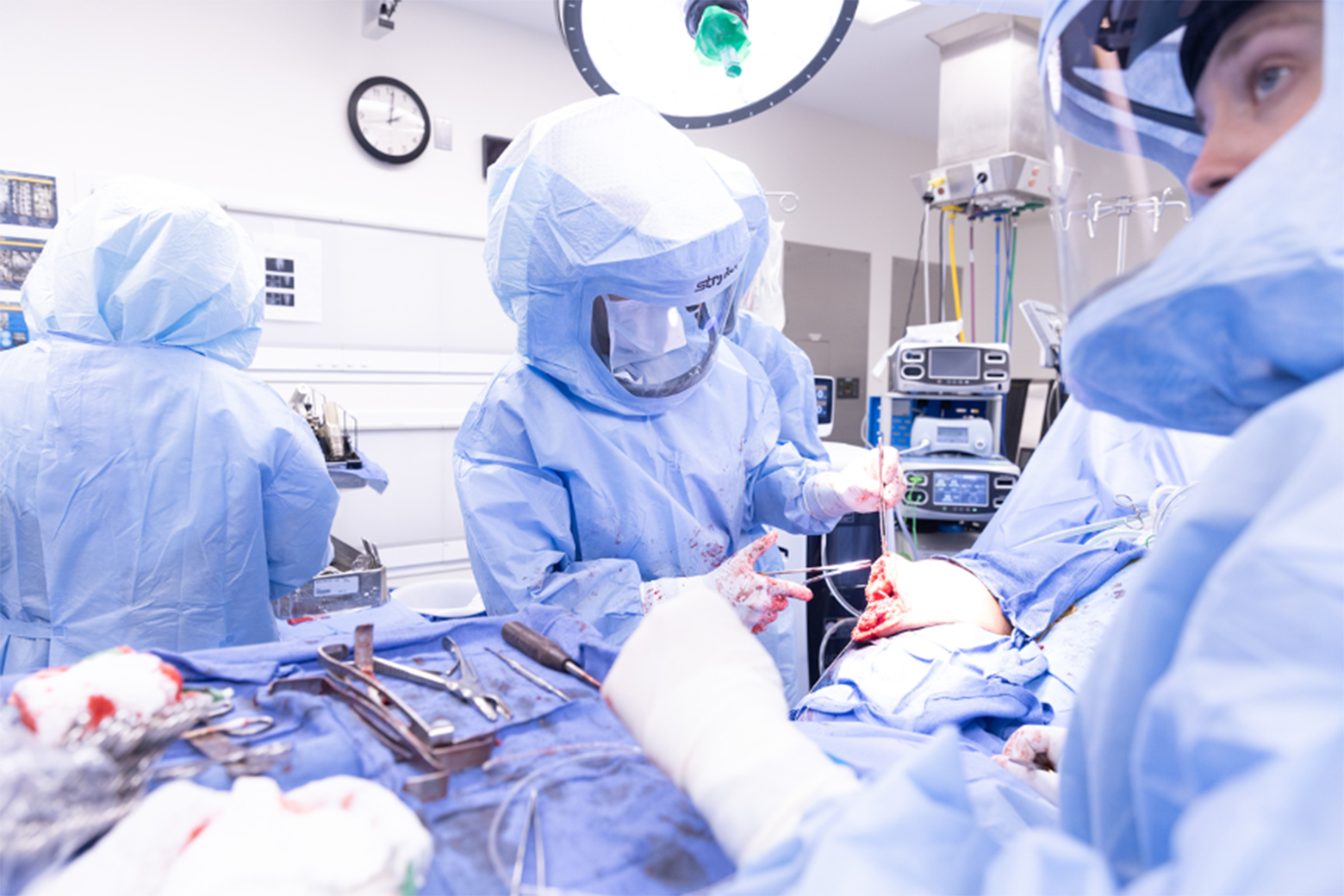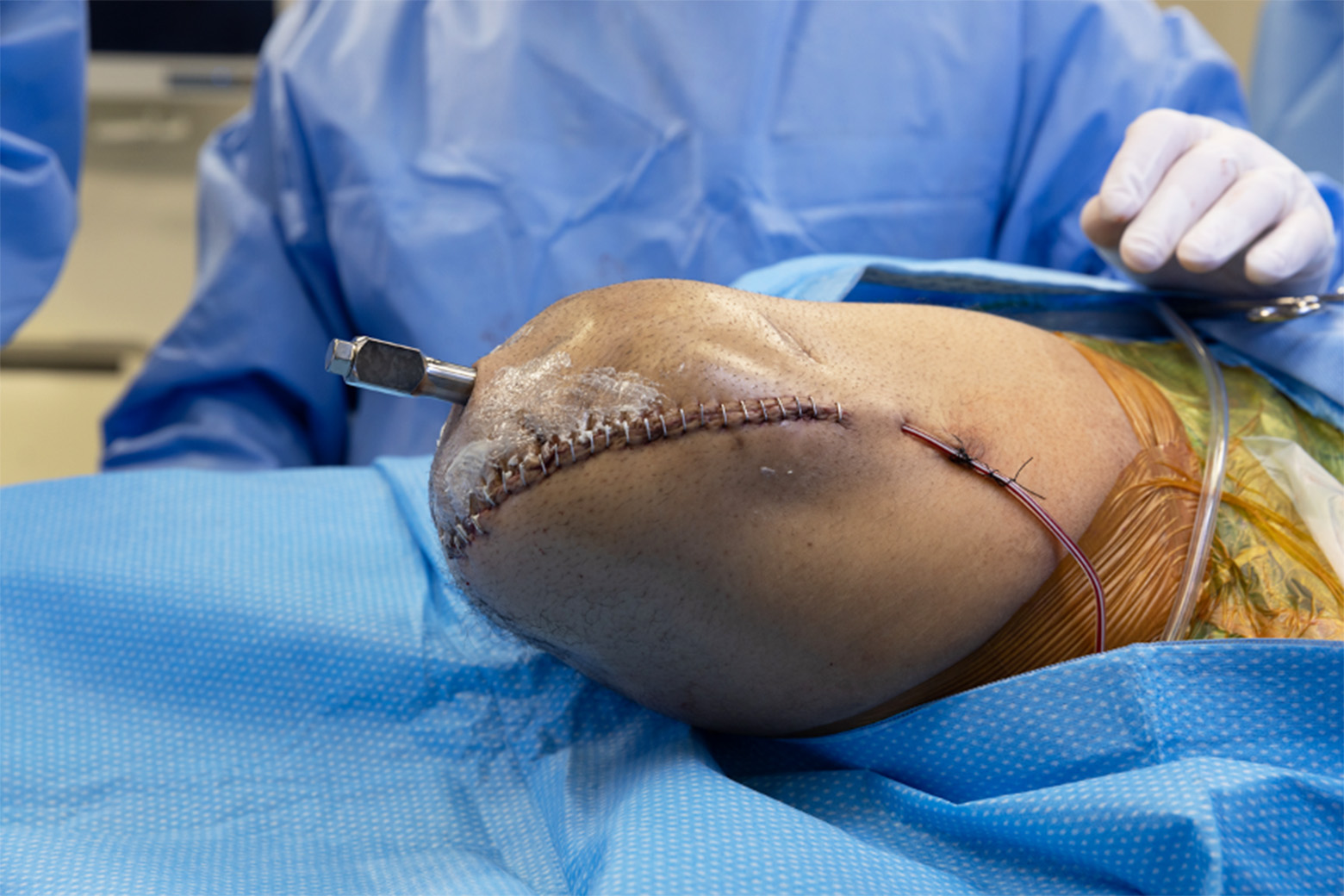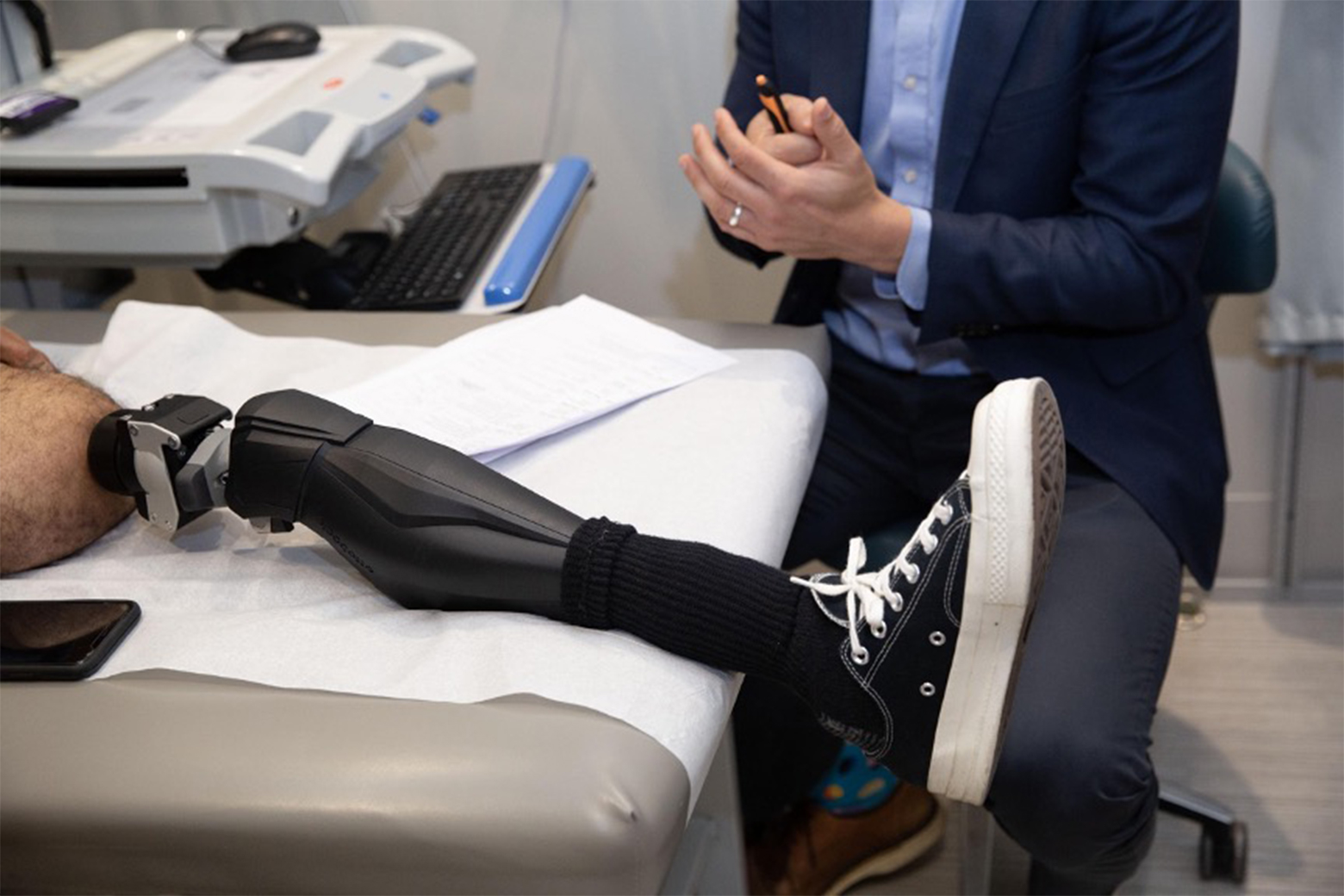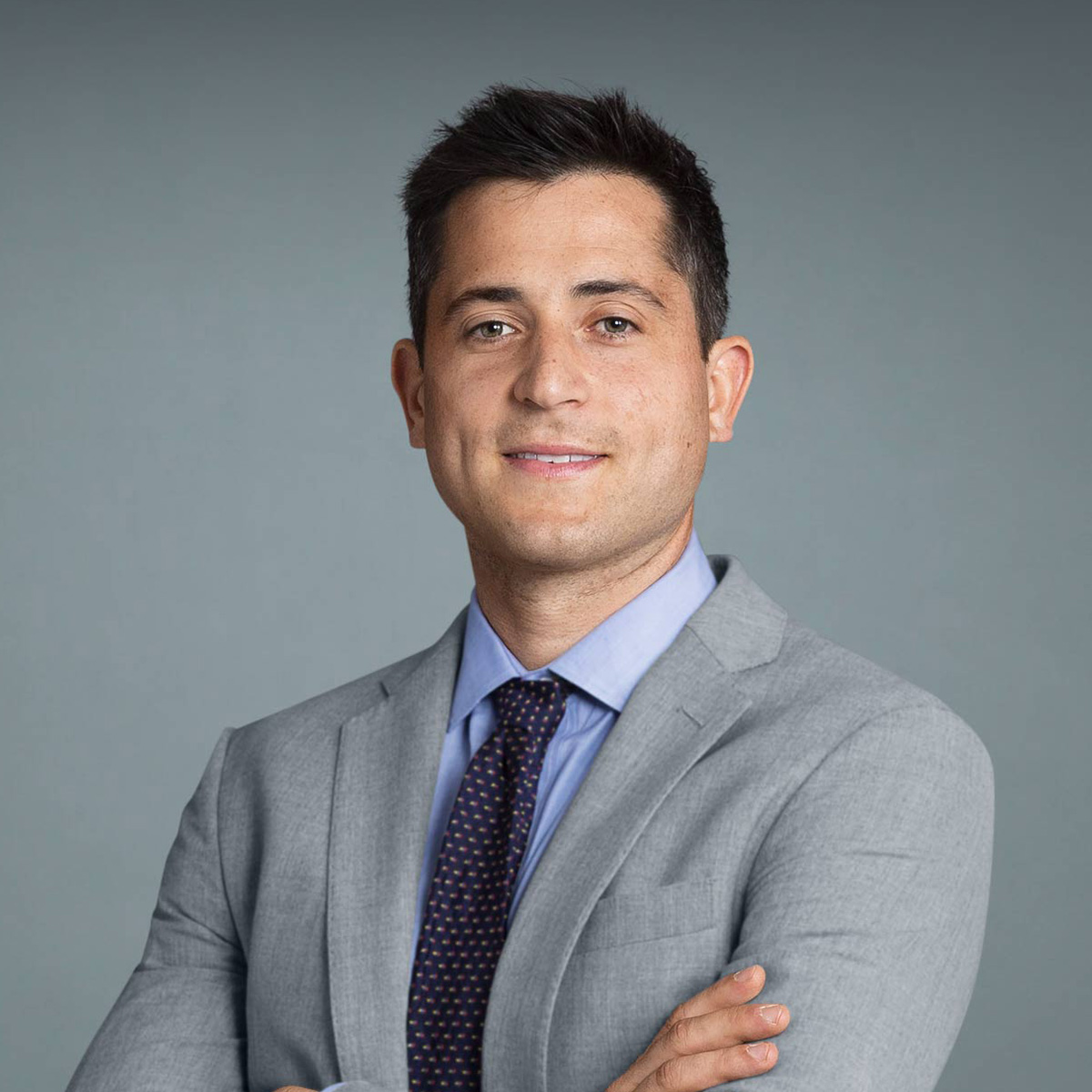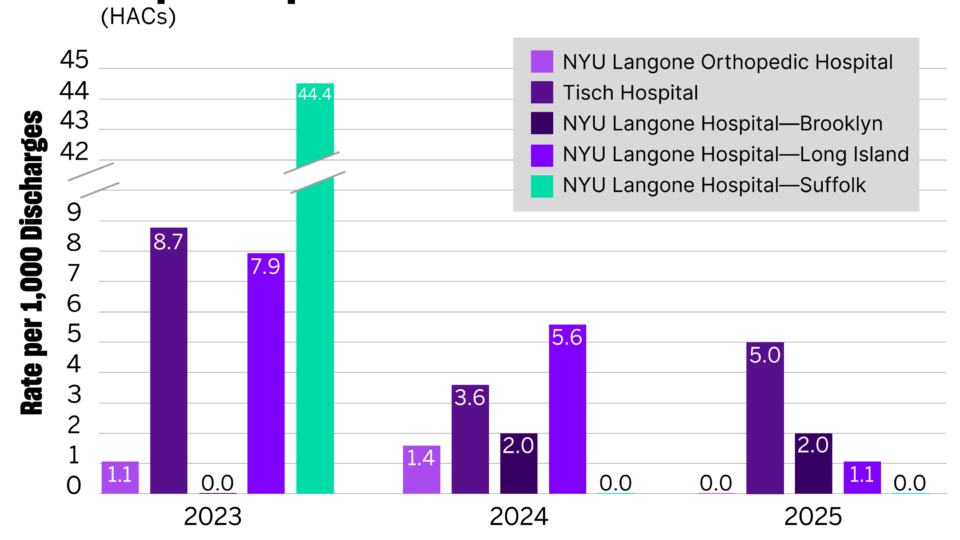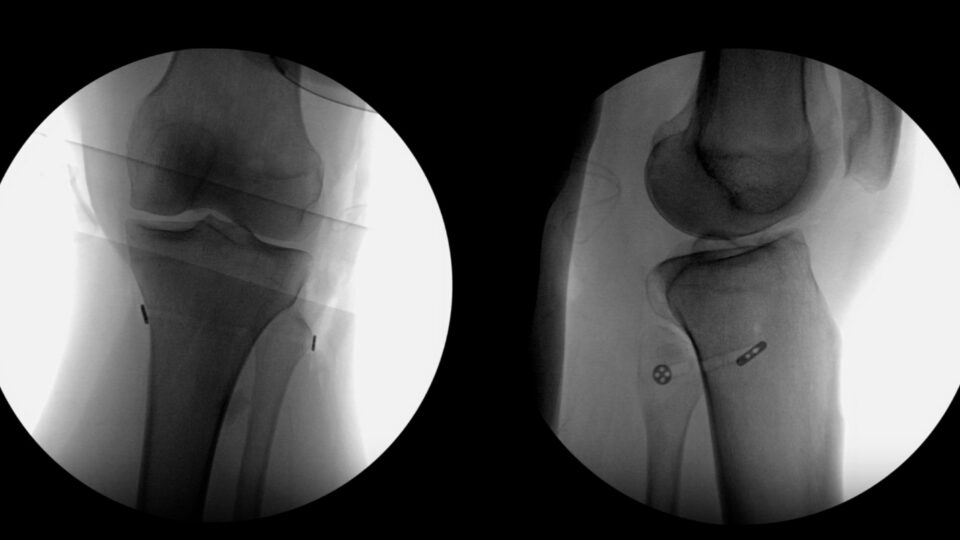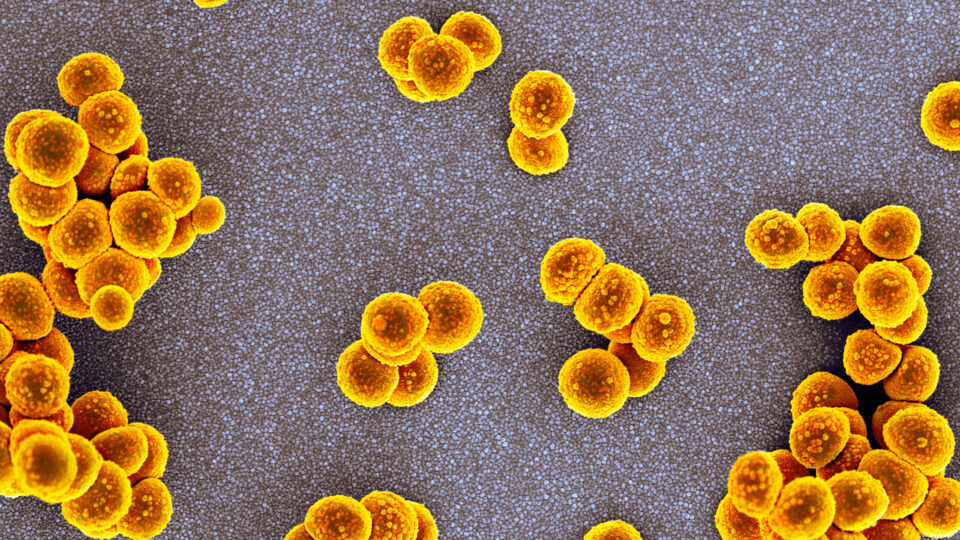Osseointegration Enhances Post-Amputation Connection with Prosthesis
In August 2022, a 46-year-old truck driver presented to NYU Langone Health’s multidisciplinary Center for Amputation Reconstruction after his left leg had been crushed between a truck and loading dock and he had undergone a left transfemoral amputation. The man, active in sports prior to his injury, suffered from debilitating nerve pain and phantom limb syndrome and struggled with the fit and use of his traditional prosthetic.
Orthopedic surgeons and center co-directors Omri Ayalon, MD, and Jacques Hacquebord, MD, performed a new two-stage osseointegration surgical procedure to implant a permanent titanium prosthetic connector in the man’s left femur to enhance the fit between his thigh and prosthetic leg.
“This unique and comprehensive solution is a paradigm shift in the treatments we are able to offer individuals with limb loss.”
Omri Ayalon, MD
Compared to traditional socket prostheses, osseoanchored prostheses allow for increased range of motion, limb strength, proprioception, and osseoperception. In addition, the permanent implant increases comfort and eliminates skin irritations, ulcers, and perspiration; allows for weight gain and loss; and simplifies prosthetic attachments.
“Osseointegration is basically fixing the prosthesis itself to the patient’s skeleton,” says Dr. Ayalon. “There’s no pressure on the skin or the soft tissue at all, so that gets rid of all of the soft tissue concerns of a traditional socket prosthesis.”
In the first surgery, he and Dr. Hacquebord performed targeted muscle reinnervation and implanted the titanium osseoanchored prosthetic system. During a follow-up surgery in November 2022, the surgeons attached an abutment to the implant. The complex soft tissue surgery closed the gap between bone and metal, allowing the thigh to heal down to the distal femur and titanium connectors.
By January 2023, the patient reported significant improvement in his pain, phantom limb symptoms, mood, and mobility, and he was successfully fitted with a full prosthetic in May 2023. The patient’s strength continued to increase with time and physical therapy until he was able to walk unassisted.
“The patient is ecstatic. He’s back to living life and participating in activities that he couldn’t do before.”
Jacques Hacquebord, MD
“He’s ecstatic,” Dr. Hacquebord says. “He’s driving, he’s walking, he was just outside shoveling snow. He’s back to living life and participating in activities that he couldn’t do before.”
Based on the success, Dr. Ayalon adds, “This unique and comprehensive solution is a paradigm shift in the treatments we are able to offer individuals with limb loss.”



